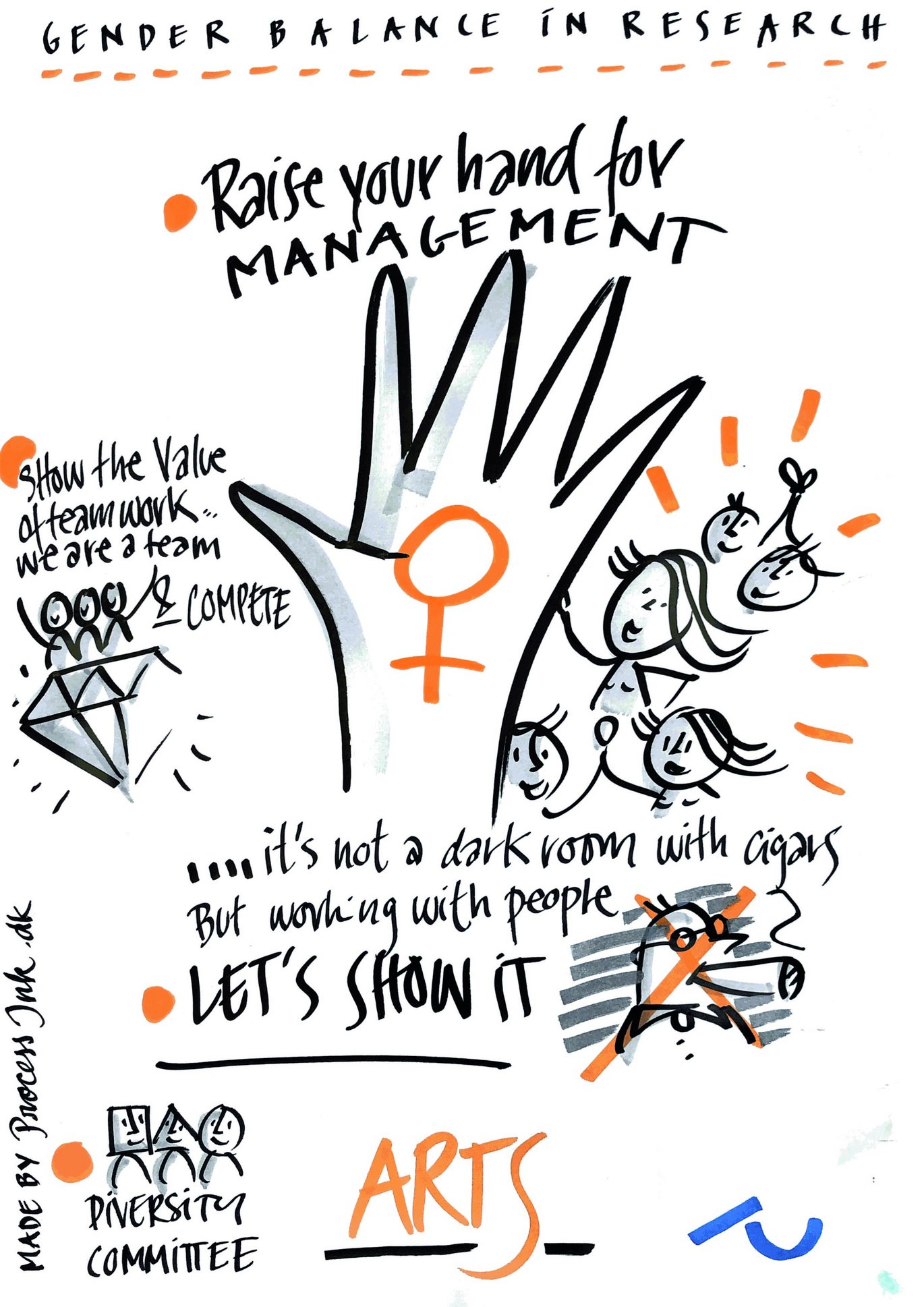Diversity rhymes with university
Dean Johnny Laursen has decided to set up a committee for diversity at the Faculty of Arts. In this article he explains his reasons. The idea grew out of the “Gender Balance” conference in March. The committee will help the faculty management team to improve the faculty’s gender balance and diversity in general, as well as helping to develop an inclusive and attractive culture in the workplace.

Dear staff
I normally write to you in connection with the summer holiday and Christmas, or when the faculty’s budget has been finalised. But this year I have been inspired to put pen to paper for another reason altogether: on 8 March it was International Women’s Day. As you may or may not know, 8 March was chosen based on a decision by the second international socialist women’s conference in Copenhagen in 1910. In those days, the achievement of political and social equality for women was a truly uphill struggle. Things have improved a lot since then. But as pointed out at AU’s ambitious gender-balance conference on 8 March this year, plenty of work remains to be done. A lot of people attended the conference and the faculty’s highly successful break-out session in the afternoon. But I wish even more people had heard not only the speakers in the morning, but also the presentations by our own researchers Christina Fiig, Sara Kier Praëm, Unni From and Marie Vejrup Nielsen. I know we all lead busy working lives, but the achievement of a healthy gender balance demands more action in relation to all the activities of our faculty. I can’t help feeling that Nina Bang and other participants in the 1910 conference in Copenhagen would be surprised to learn that some of the problems they fought to solve before women got the right to vote had still not been solved more than 100 years later at one of Denmark’s most respected institutions of research and higher education.
As I pointed out in my introduction to the faculty’s break-out session, we’re not talking about rocket science here. There are more female students and PhD students at the Faculty of Arts than male students; but the same can hardly be said with regard to the number of female academic staff – particularly when it comes to professorships. In addition, there are big inconsistencies across the faculty in terms of the number of female researchers employed at our different schools and departments. And finally, it’s important to ensure that more women are appointed to the management in future.
The management has already taken certain steps to remedy the situation. AU has a plan of action aiming to involve more women in research; and once a year the Faculty Liaison Committee and Academic Council discuss the profiles of our new employees. These are fruitful discussions, based on accurate data. I also know that our heads of school and appointment committees (assisted by the HR Department) are now making great efforts to appoint more women to research positions. And it’s true that some progress has been made. Since 2014 the number of female assistant professors has increased from 41% to 54%; the number of female associate professors has increased from 40% to 46%; and the number of female professors has increased from an embarrassing 29% to a not-very-impressive 35%. It’s also clear that the situation is only changing slowly. At this underwhelming speed, it will take at least 20 years to achieve a decent gender balance. However, we only have limited tools at our disposal. The turnover of academic staff at our faculty is about 8% a year, allowing room for new appointments providing that our financial situation remains stable and reliable. And if we want to persuade more women to apply for positions at the Faculty of Arts, we need to continue this financial stability as well as using our 8% turnover to recruit more women each year than we do today.
In the morning session we heard a presentation by the former rector of the Copenhagen Business School, Per Holten-Andersen, who explained that he had set up a diversity committee at CBS because there is a certain amount of bias at Danish universities – conscious or not. And during the faculty’s own discussion there were several presentations and contributions from the floor which also focused on forms of collaboration (including research collaboration), workplace culture and the need to develop a more attractive workplace. Here, too, there is clearly plenty of scope for improvement. Nor is there any doubt that we could be doing more to get more women involved in administrative management. In both the presentations and the audience, I could sense a fundamental, pent-up feeling of impatience. Perhaps this was expressed best by Marie Vejrup, who advised us to stay angry.
The morning session also included a presentation by Lynn Roseberry, who said that one of the most important factors was that the management demonstrated a clear sense of commitment. While listening to Per and Lynn – with our employment statistics still ringing in my ears from the evening before – I decided that the faculty should have a diversity committee to provide advice about how true diversity can be achieved. The primary task of this committee will be to advise (and preferably exert pressure on) the dean and faculty management team to improve our track record when it comes to the appointment of women to permanent positions on the academic staff. I think the chair of this committee – who can and should be one of our many passionate enthusiasts in this area – should refer direct to the dean, and should be invited to meetings of the Faculty Liaison Committee and Academic Council when relevant. I don’t normally make this kind of wide-ranging organisational decision without discussing it carefully with the management group first. But in this case I felt that the nature of this issue and Lynn’s wise words about management commitment justified quick action.
We need a forum which people can use to express any sense of impatience that they may feel. And in this case, the management is the right place to go to convey the knowledge and experiences that many people have. I hope that the diversity committee will give a voice to this knowledge and help the faculty management team to improve the faculty’s gender balance and diversity in general, as well as helping to develop an inclusive and attractive working culture at the faculty.
Best wishes
Johnny Laursen
Dean
Faculty of Arts, Aarhus University

